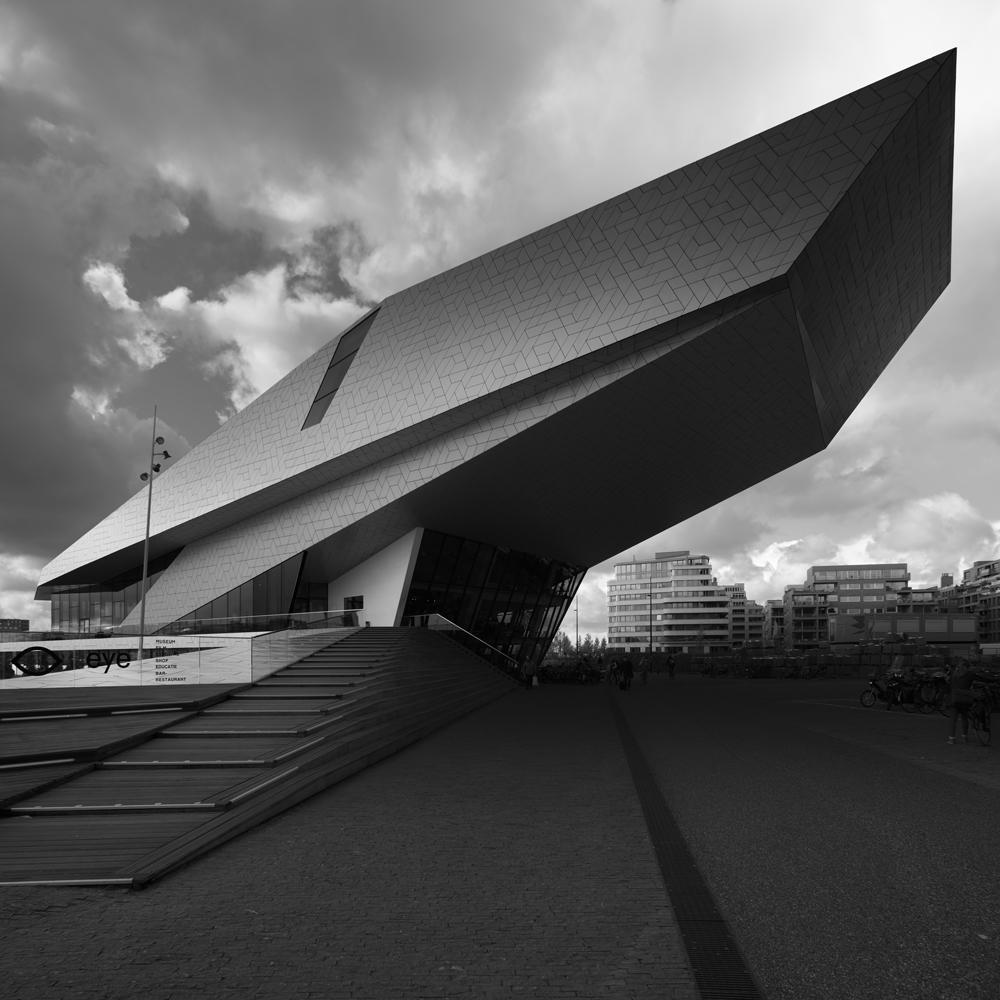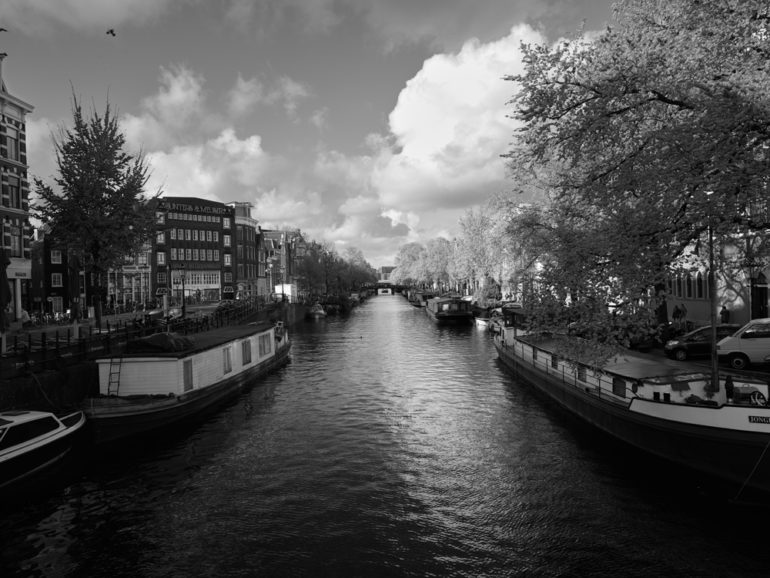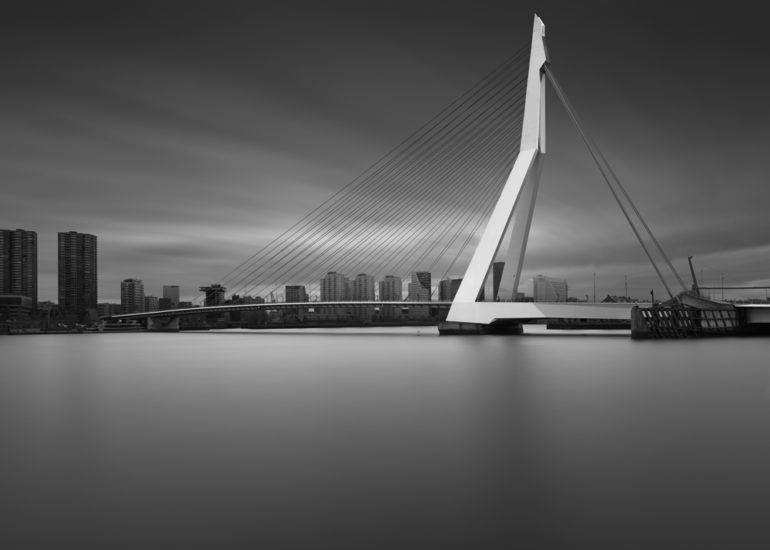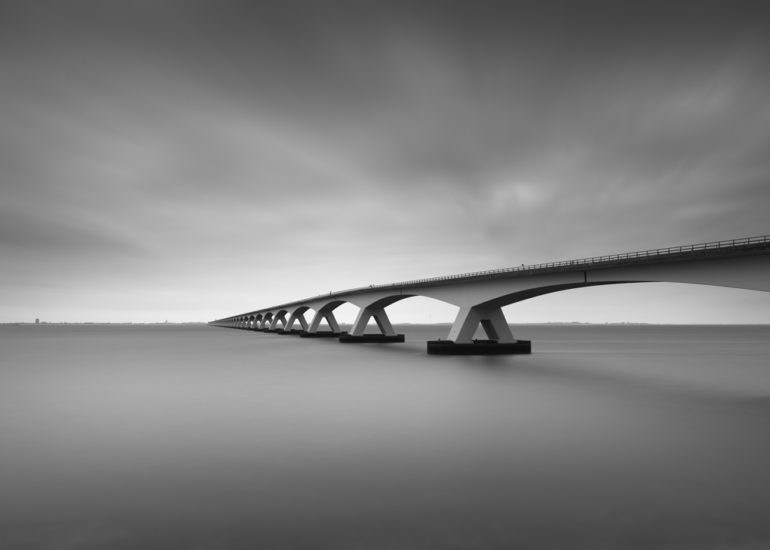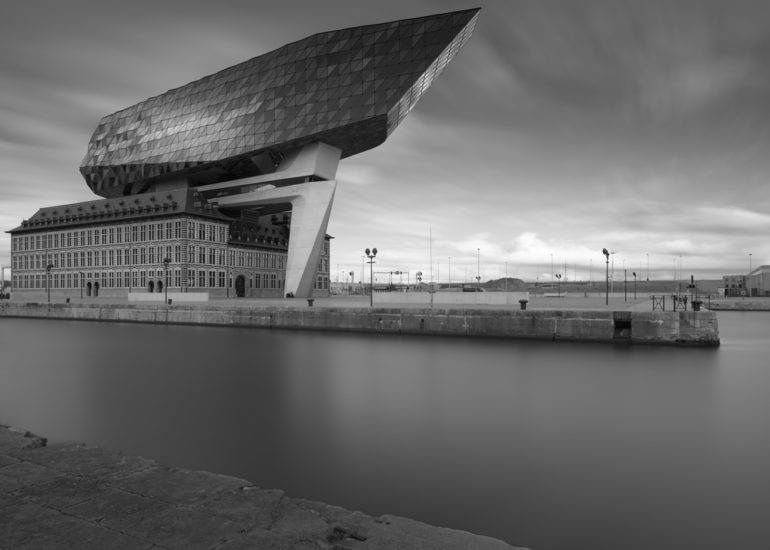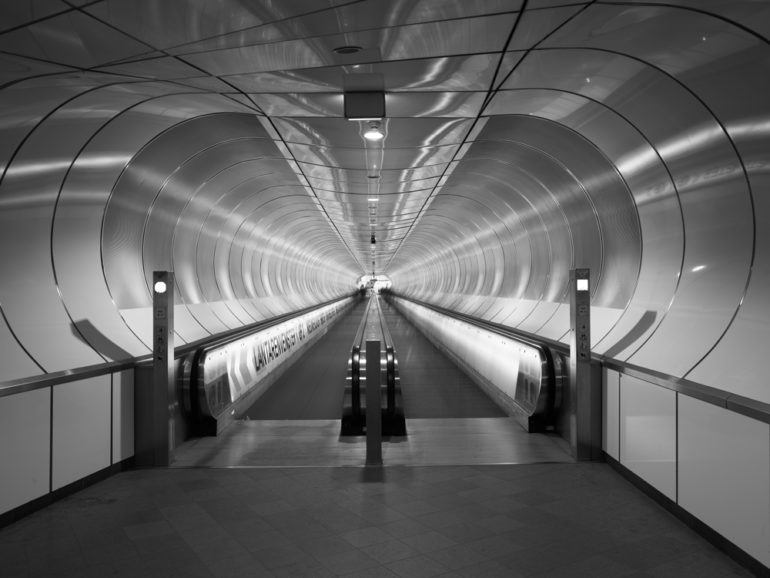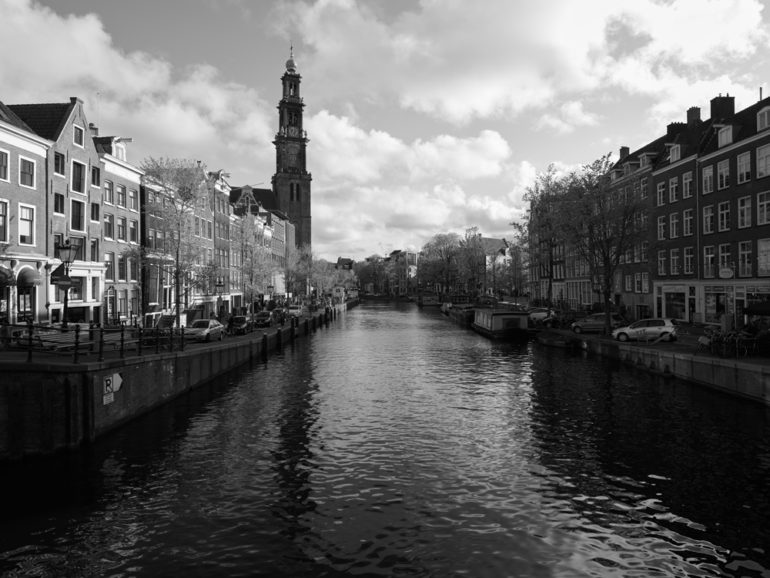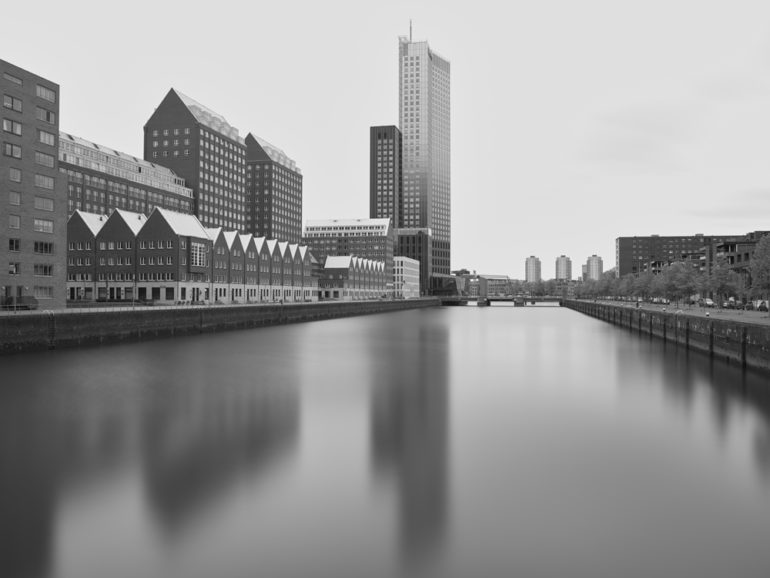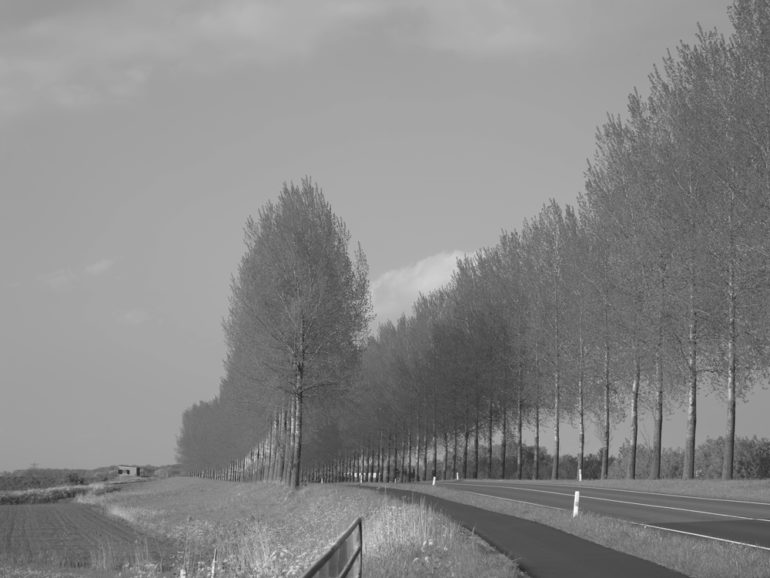All images by Joel Tjintjelaar. Used with permission.
In many ways, Photographer Joel Tjintjelaar is “photographer’s photographer.” He shoots beautiful long exposure black and white images, street photography, landscapes, still lifes, etc. He’s creative while also blending in elements of capturing a scene though while still putting his own signature perspective on it. Joel coins himself as a fine art architecture photographer specializing in black and white long exposure photography, but he’s also an author and educator who teaches workshops on black and white and fine art photography, architectural photography and long exposure photography, around the world. He has developed his own signature method of post processing that has been adopted by many of his many followers around the world, to not only create beauty but also communicate emotions.
In fact, he attributes his method more to large format photography than anything else.
Editor’s Note: All images in this interview were shot with the new Phase One IQ3 Achromatic Medium Format camera back.
Phoblographer: Talk to us about how you got into photography.
Joel: I don’t quite remember because I’ve always been interested in photography, but what I do know is that it was after seeing the work of black and white portraiture masters such as Irving Penn, Richard Avedon and Yousuf Karsh and the street photographs from Bresson that inspired me to pursue photography as a serious time consuming obsession. Those photos were pure magic.
Phoblographer: In an age where the world in dominated by color photography, why are you so enamoured by black and white? It takes up a large part of your work not only in architecture and still lifes but also in street and other projects.
Joel: I could give the more obligatory answers such as ‘black and white has more mood’ or ‘black and white reveals the essence of things’, and I concur with those answers, but I always found black and white has a strong aesthetic appeal since it’s one step away from reality. And that’s always an important motif in my work: to move away from reality as many steps as possible. Doing long exposure photography is another step away from reality, all with the objective to create aesthetics. And there’s another more neurobiological aspect to black and white photography: black and white is working in difference in light intensities only, luminance differences, and the enhancement of those differences.
The perception of depth takes place in the colorblind part of the brain; it is independent of color, and it’s because of that, that we can perceive and create more easily depth in black and white images that make an image come alive. Colors can easily distract from the actual luminance value and one might not see that an image can have a beautiful use of colors but is lacking depth.
Phoblographer: You’ve been using the new 100MP Apochromatic Phase One Back and you also used one of the previous versions. What do you think? Of course, you like it, but how do you personally feel that it’s going to help you become a better creator?
Joel: Both the new IQ3 achromatic as its predecessor are fantastic cameras to use from a technical point of view: the enormous dynamic range makes a big difference and it’s easier to process and enhance images then. The amount of detail is fantastic for an architectural photographer. But there’s also the lack of a Color Array Filter (CFA) that makes a qualitative difference for the end result in black and white. This is what usually happens if you shoot with color sensors for a black and white result:
(1) Photo sensor captures light information + (1a) color information (wavelength range) through the CFA > (2) raw data is converted to a full color image through a specific algorithm dependent on the CFA used > (3) photographer converts or removes color data for a black and white result > (4) photographer further processes image in post-production (optional).
With a black and white only digital sensor you skip steps 1a, 2 and 3 and all interpolations. This is more pure unaltered information. And it shows in the subtlety of contrasts in the image that’s based on luminance values only, not on color values. This makes it easier to come up with a final result, both from a technical point of view as from an artistic point of view. So yes, it makes you a better creator.
Phoblographer: You also shoot a lot of street photography. Have you considered shooting street with this back at all? Of course, a large medium format camera isn’t very low profile; but it could work in more of a “photo wait” scenario, no?
Joel: I love to do street photography but it is also one of the hardest things to do in photography. Good street photography, in my view, depends on the ability to see randomly occurring relationships between objects in a street scene, while at the same time they happen, you know they will become meaningful in a 2-dimensional frame. Those relationships are 99% of the times pure happenstance and are there for just a fraction of a second. In other words, there’s a need for speed and agility in those situations and for smaller agile and low profile cameras. But that doesn’t mean I wouldn’t shoot street with a medium format camera.
Imagine the ‘micro scenes’ within a visible main scene that you can capture with such a camera and cannot be seen with the eye and a smaller camera. I have tried to do that with the previous Phase One achromatic back in New York but it requires more patience, and in most of the cases I ended up with staged scenes. I think though that’s more due to a lack of talent on my part.
Phoblographer: If you were to liken the new Apochromatic back and your workflow to any sort of colloquial film and development process, what would it be? Besides the romance within your images, do you feel like this camera back inspires any new sort of creativity within you? To that end, have you been inspired to try new things with your work?
Joel: My workflow could then be more compared to the traditional large format process. I use tilt shift lenses most of the time and after a day of shooting I would come home with just 5 or 6 images, rarely more than that. I take the time to set up a shot and I would only take out the camera if I know I’m going to shoot it. Also in the development phase I spend a lot of time to come up with my individual interpretation. I think Ansel Adams would’ve loved this back!
The information captured with this digital back is more pure and unaltered since it won’t pass a CFA and a black and white conversion algorithm. So it only changes my workflow on one specific and critical point: the conversion from color to black and white. The rest of my workflow stays the same but I have more and better digital information to work with for better and also faster end results. Trying to make accurate selections in Photoshop for example can happen much more accurately and faster with the data from the Phase One files.
Phoblographer: Let’s talk about prints. It’s unfortunately true that many photographers don’t print any more. But with this much resolution it would almost be a shame not to print and to print something large. So have you made prints with this back? How is this affecting your print workflow?
Joel: True and unfortunate indeed. I always print all my work and till now I haven’t yet had the opportunity to print the results with this new Phase One back, but I’ve printed the results with the previous achromatic back and it looks fantastic. This back won’t change my workflow up to the point that the photo needs to be digitally resized for a large format print: my workflow is designed to only create photos that will be printed. Preferably large, meaning varying in size from 40 inches up to 100 inches. With this back I don’t need to resize the photos anymore.
The following images are unprocessed photos from the new Phase One IQ3 Achromatic digital back shot by Joel.
For more from Joel, be sure to follow him on Facebook and Instagram.


